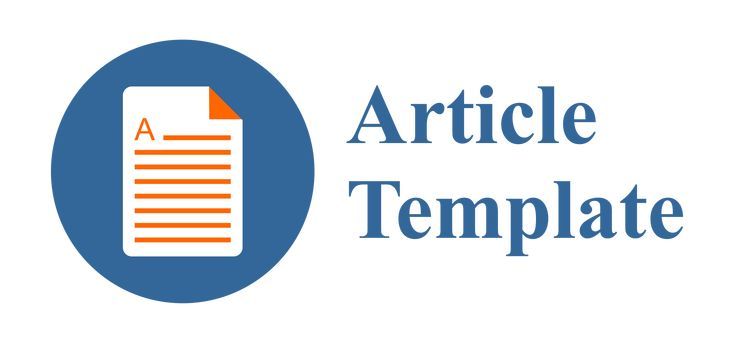A Need Analysis of Blended Learning Model for Deaf Students in Higher Education
DOI:
https://doi.org/10.29408/edumatic.v4i2.2649Keywords:
Blended Learning, Deaf Student, ICT, Need AnalysisAbstract
Student diversity is one of the demographic advantages of education. One type of diversity is the registration in higher education students with special needs. For this purpose, teachers as educators are expected to be able to provide all students with adaptive teaching. Although the number of students with special needs is still a minority, educators still need to provide full education for them. Appropriate teaching can be achieved with the use of information technology, in particular the Internet. The use of the Internet as a support for classroom activities can be realized in a blended learning model. However, for each model to be used, an analysis study needs to be performed in order to have optimum results. The purpose of this study is to recognize needs and to obtain information on a blended learning model for deaf students in higher education. Needs analysis is carried out by means of a survey approach using a questionnaire provided to deaf students. The data were analyzed descriptively. The results have shown that deaf students meet the criteria for the development of a mixed learning model. Based on the study, it was concluded that the blended learning model can be applied to deaf students.
References
Abdulrahman, D. E. (2012). Penggunaan Media Flashcard dalam Meningkatkan Kemampuan Membaca Anak Tunarungu pada Bidang Studi Bahasa Indonesia di Kelas III SDLB. JAJJi_Anakku, 11(2), 69–78.
Arnida. (2020). Paradigma Pendidikan di Masa Pandemi Covid 19, menurut Perspektif Teknologi Pendidikan. Makassar: Universitas Negeri Makassar.
Arrorio, A. (2017). Is Media Literacy An Urgent Issue In Education For All? Problems Of Education In The 21st Century, 75(5), 416–418.
Atmajaya, J. R. (2018). Pendidikan dan Bimbingan Anak Berkebutuhan Khusus. Bandung: Rosda.
Avinash, K. (2017). E-learning and Blended learning in Orthodontic Education. APOS Trends Orthod, 7(1), 88–98.
Bates, T. (AW). (2019). Teaching in A Digital Age.Columbia: University of British.
Borglum, R. N. (2016). The effects of blended learning on critical thinking in a high school Earth Science class. Electronic Theses and Dissertations.Iowa: University of Northern Iowa.
Castle, S., & McGuire, C. (2010). An analysis of Student Self-Assessment of Online, Bleended, and Face-to-Face Learning Environments: Implications for Sustainable Education Delivery. International Education Studies, III(3), 36–40.
Deechai, W. (2019). Efficiency and Effectiveness of Blended Learning for Critical Thinking Development in Thai Vocational Students. Revista Espacious, 40(19), 12-21.
Dermawan, O. (2013). Strategi Pembelajaran Bagi Anak Berkebutuhan Khusus di SLB. Psympathic, Jurnal Ilmiah Psikologi, VI(2), 886–897.
Hidayati, R. E. (2013). Blended Learning untuk Menyambut Implementasi Kurikulum 2013. Retrieved from http://jatim.kemenag. go.id
Husamah. (2015). Pembelajaran Bauran (Blended Learning). Jakarta:Prestasi Pustaka.
Izzati, M., & Kuswanto, H. (2019). Pengaruh Model Pembelajaran Blanded Learning berbantuan Kahoot terhadap Motivasi dan Kemandirian Siswa. EDUMATIC: Jurnal Pendidikan Informatika, 3(2), 65–75. https://doi.org/10.29408/edumatic.v3i2.1656
Jones, C., & Shao, B. (2011). The Net Generation and Digital Native. Open University Higher Education Academy.
Mahardika Supratiwi. (2020). Implementasi Model Blended Learning terhadap Pemahaman Mata Kuliah Pembelajaran IPA bagi Mahasiswa Berkebutuhan Khusus pada Kelas Inklusi di Perguruan Tinggi. Special and Inclusive Education Journal, 1(1), 1-7.
Malastita, B. R., & Sediyono, E. (2011). Model Pembelajaran Matematika untuk Siswa Kelas IV SDLB Penyandang Tunarungu dan Wicara dengan Metode Komtal Berbantuan Komputer. Jurnal Informatika, 7(1), 7-26.
Marzal, J. (2014). Desain Media Pembelajaran Bahasa Inggris untuk Siswa Tunarungu Berbantuan TIK. Tekno-Pedagogi, 4(2), 32–44.
Meimulyani, & Caryoto. (2013). Media Pembelajaran Adaptif. Luxima.
Ni’matul Khoiroh, Munoto, dan L. A. (2017). Pengaruh Model Pembelajaran Blended Learning Dan Motivasi Belajar Terhadap Hasil Belajar Siswa. In Jurnal Penelitian Pendidikan, 10(2), 97-110.
Poejdiastuti, S. (2010). Pembelajaran Kimia Berbantuan Multimedia Untuk Siswa Tunarungu SMALB-B. Jurnal Ilmu Pendidikan, 17(1), 55–63.
Rivera, J. H. (2017). The Blended Learning Environment: A Viable Alternative for Special Needs Students. Journal of Education and Training Studies, 5(2), 79. https://doi.org/10.11114/jets.v5i2.2125
Sakti, R. H., Giatman, Sukardi, Ernawati, & Waskito. (2020). Flipped Classroom-Computer Based Instruction untuk Pembelajaran Revolusi Industri 4.0: Rancang Bangun dan Analisis Kebutuhan. Edumatic, 4(1),63-72.
Smaldino, S. E. (2012). Instructional Technology And Media For Learning Ninth edition. PEARSON Merrill Prentice Hall.
Svenningven, L. (2011). Effects of Computer-Aided Personalized System of Instruction in Developing Knowledge and Critical Thinking in Blended Learning Courses. The Behaviour Analys Today, 12(1),34-40.
Wahyuni, S. (2019). Edmodo-Based Blended Learning Model as an Alternative of Science Learning to Motivate and Improve Junior High School Students’ Scientific Critical Thinking Skills. IJET, 14(7), 98–110.
Zain, A. R., & Jumaidi. (2018). Effectiveness Of Guided Inquiry Based On Blended Learning In Physics Instruction To Improve Critical Thinking Skills Of The Senior High School Student. J. Phys.: Conf. Ser. 1097 012015.
Downloads
Published
How to Cite
Issue
Section
License
All articles in this journal are the sole responsibility of the authors. Edumatic: Jurnal Pendidikan Informatika can be accessed free of charge, in accordance with the Creative Commons license used.

This work is licensed under a Lisensi a Creative Commons Attribution-ShareAlike 4.0 International License.




